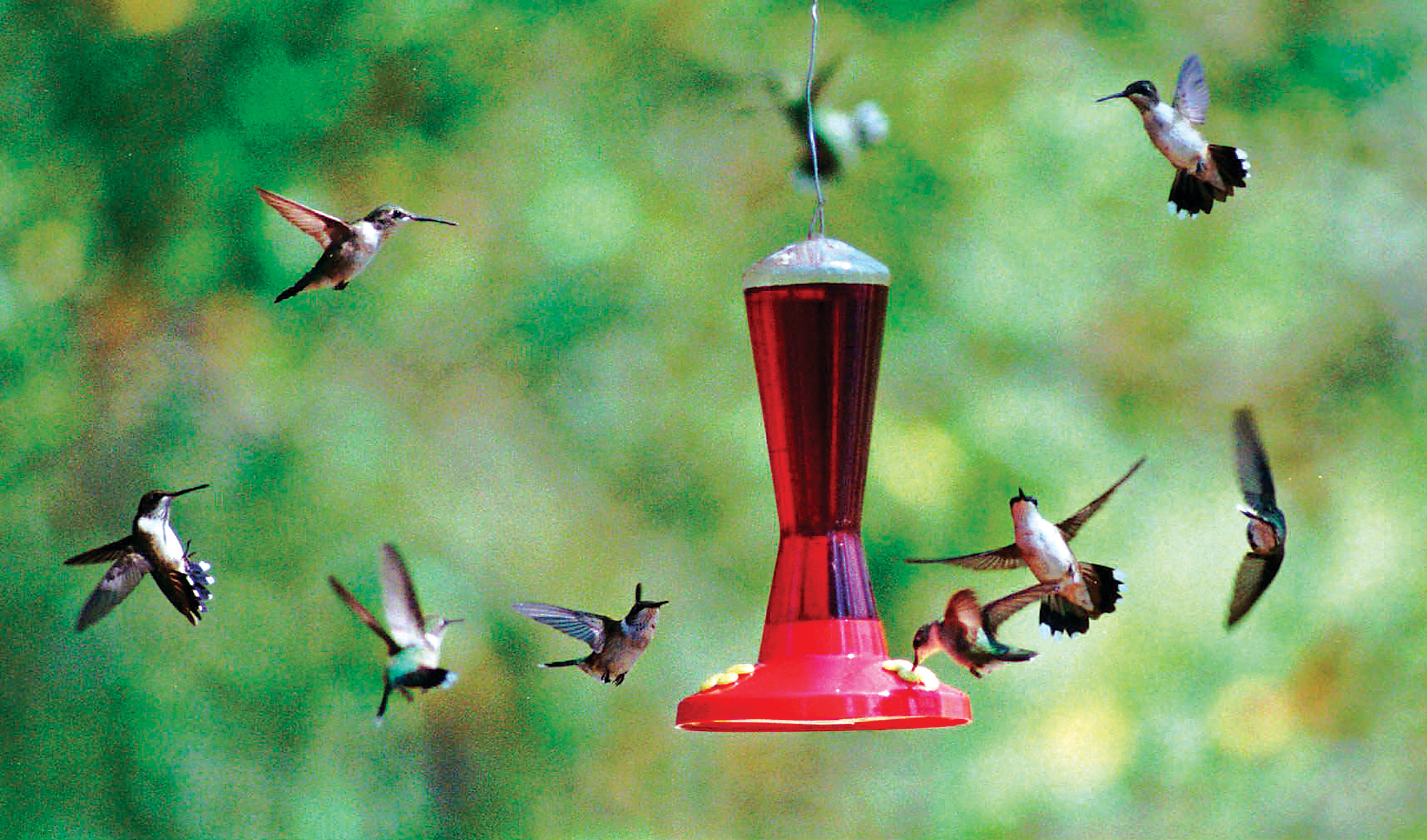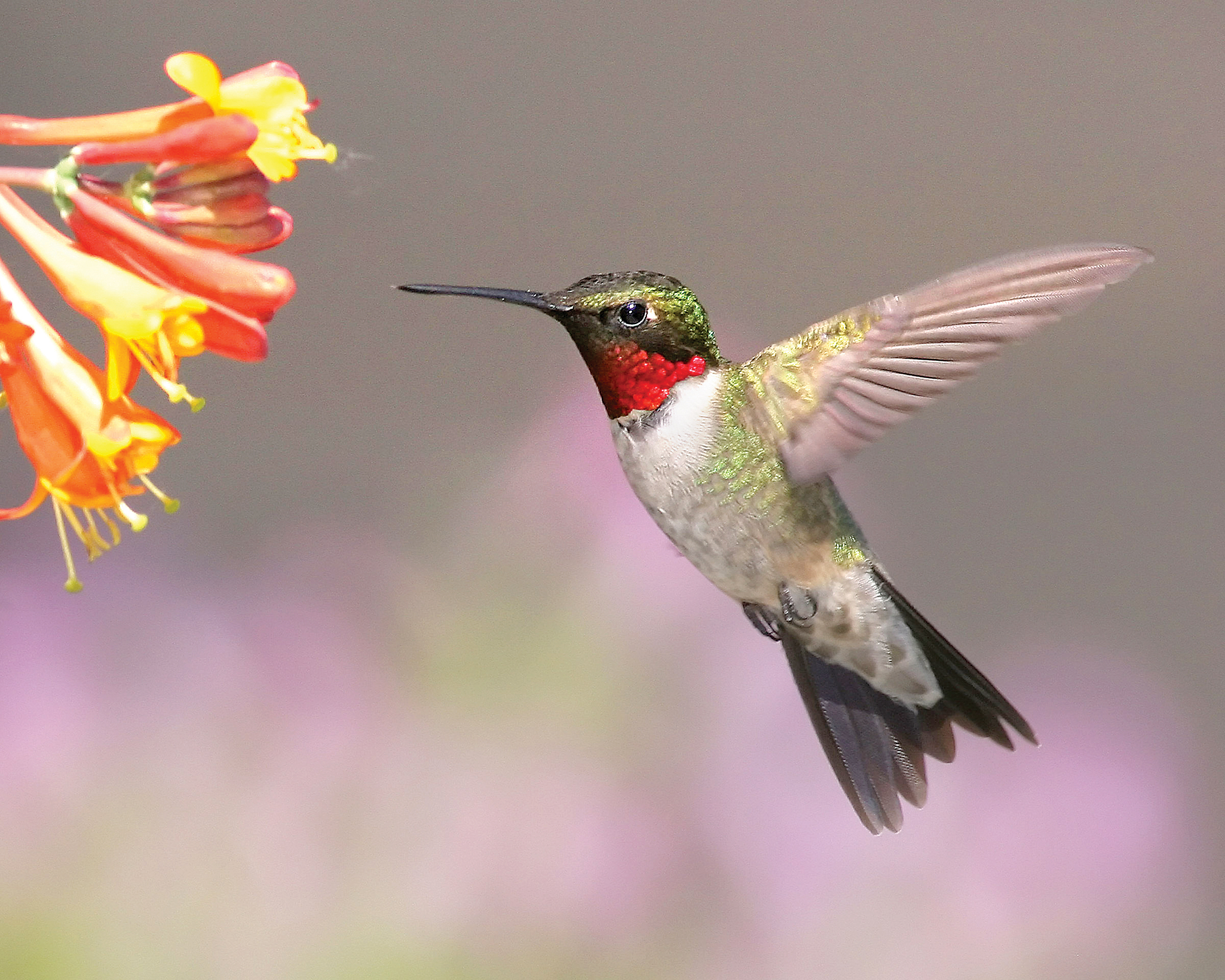Buzzing in: Attract hummers to your yard
Saturday, May 4, 2013
HUMMINGBIRD TOP 101. On average, the ruby-throated hummingbird flaps its wings more than 3,000 times per minute.2. Because of their short legs, hummingbirds have difficulty walking or hopping.3. Hummingbirds' high activity levels are made possible by a metabolism that is 100 times faster than that of an elephant.4. During normal activity, a hummingbird's heart beats 500 times per minute, and its body temperature is 102.2 degrees.5. In the Caribbean, hummingbirds are known as "el zunzun" in reference to the buzz generated by their rapid flapping.6. The ruby-throated hummingbird is the only hummingbird species that breeds east of the Mississippi River.7. To hover, hummingbirds flap their wings in a figure-eight pattern.8. When they hatch, ruby-throated hummingbirds weigh 0.62 grams, about one-third the weight of a dime.9. There are 300 species of hummingbirds. The smallest, the bee hummingbird, is less than 2 inches long. The largest, the giant hummingbird, is 8.6 inches long.10. Green violet-ear hummingbirds are zippy and are capable of flying at up to 93 miles per hour over short distances.Source: National Geographic, Learner.org, San Diego ZooNEIGHBORHOOD WATCHOn April 17, the Audubon Society started Hummingbirds @ Home, a citizen science program designed to help researchers track how climate change and shifting food sources (natural and artificial) affect hummingbirds.The program, which is free to download, allows backyard birders to report on where they see hummers and what flower species they're feeding from. They can upload this information to a database that eventually will map results from across North America. For more information, visit www.hummingbirdsathome.org.FEEDING TIPSIf you decide to hang a feeder to bring in hummingbirds, the Audubon Society suggests the following:• Mix your own sugar water with a recipe of one part sugar to four parts water.• Hummingbirds can be extremely territorial about feeding sources, so if you want more hummers, hang multiple smaller feeders far enough apart to stave off miniature dogfights.• Keep feeders in the shade to prevent the sugar water from fermenting or spoiling.• Prevent the spread of diseases or harmful bacteria by immersing feeders in a solution of one part bleach to nine parts water and rinsing them thoroughly. Do this twice a month.• Change sugar water twice weekly or whenever it becomes cloudy, whichever comes first.KNOW IT WHEN YOU SEE ITHummingbirds are pretty easy to identify, thanks to their hovering ability and the hum from their rapid-fire wing beats. Picking out males and female ruby-throated hummers is a bit trickier. Here's a cheat sheet:Both genders: Emerald green back, white breast, gray flanks and forked tail.Males: Smaller, with shorter bill and an iridescent red throat.Females: Larger, with longer bill and a white throat.Source: Deertrail.us
One of the fastest metabolisms in the animal kingdom. The most featherweight of avian species. The only bird that can hover, fly backwards or even - gasp - upside down.
Hummingbirds seemingly hold claim to more biologic superlatives than any other species, which has helped earn them a special place in the hearts of many nature lovers and placed them high on the must-see list for backyard birding.
"Nothing else flies like that," says Signal Mountain-based wildlife rehabilitator Alix Parks. "They're more maneuverable than a helicopter. It's really unusual."
The most common species seen near Chattanooga is the ruby-throated hummingbird. Males begin arriving in early April, followed about two weeks later by the females. Other species - such as Western states native the Rufous hummingbird - will occasionally wind up in the Scenic City, but the ruby-throated hummer is the only one that nests in the area, Parks says.
Hummingbirds will remain
in the area until August, when they will begin their long migration back to their wintering grounds in South America. While here, hummers will be most visible while feeding, an activity they spend most of their waking hours engaged in to slake the vigorous metabolism fueling all that zipping about, experts say.
A hummingbird's natural habitat is open forest, an environment that many lawns in the area mimic, and they will tend to build their minuscule nests within 100 yards of a steady food source, says University of Tennessee at Chattanooga biology professor David Aborn.
Those without gardens can entice hummingbirds to visit their property by hanging specialized feeders filled with a reservoir of sugar water, but gardeners may opt for a more natural tack by adding equally irresistible flowering plants to their landscape.
And hummingbirds, like many other bird species, find warm colors most appealing, Aborn says.
"The [attraction to the] red color is just a function of birds' physiology," he explains. "Most birds see best in the red spectrum, just like some insects are more in the blue or violet spectrum."
According to the Georgia Department of Agriculture, there are many native plants with hummingbird-friendly red or orange coloration, including trumpet creeper, flame azalea, crossvine, redbud, coral honeysuckle and Eastern columbine.
To many people, whatever it takes to bring in a zipping cloud of hummers is worth the spectacle, Parks says.
"Everybody loves hummingbirds," she says. "They're just so beautiful and so tiny. They're like little jewels."

